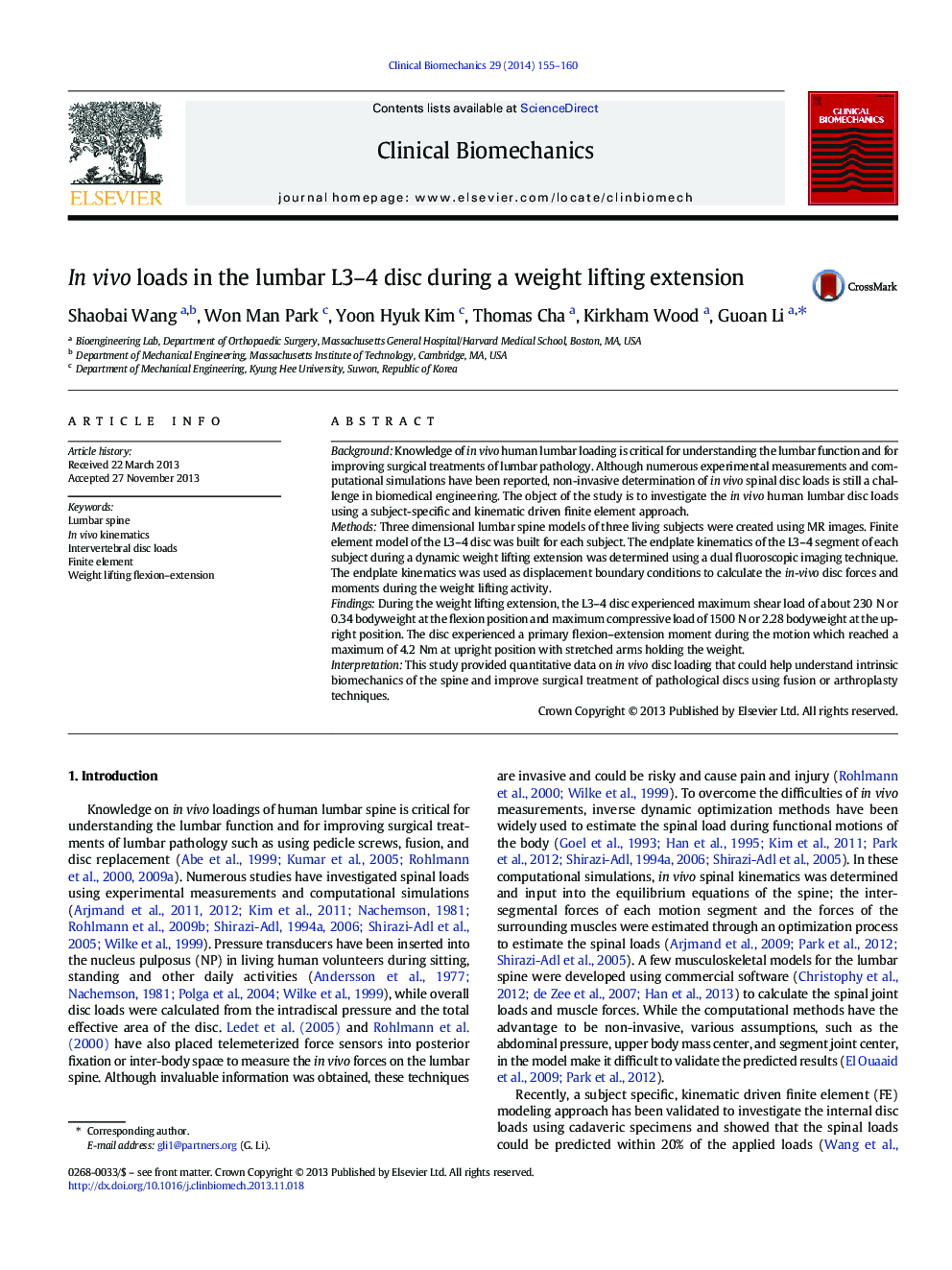| Article ID | Journal | Published Year | Pages | File Type |
|---|---|---|---|---|
| 6205016 | Clinical Biomechanics | 2014 | 6 Pages |
BackgroundKnowledge of in vivo human lumbar loading is critical for understanding the lumbar function and for improving surgical treatments of lumbar pathology. Although numerous experimental measurements and computational simulations have been reported, non-invasive determination of in vivo spinal disc loads is still a challenge in biomedical engineering. The object of the study is to investigate the in vivo human lumbar disc loads using a subject-specific and kinematic driven finite element approach.MethodsThree dimensional lumbar spine models of three living subjects were created using MR images. Finite element model of the L3-4 disc was built for each subject. The endplate kinematics of the L3-4 segment of each subject during a dynamic weight lifting extension was determined using a dual fluoroscopic imaging technique. The endplate kinematics was used as displacement boundary conditions to calculate the in-vivo disc forces and moments during the weight lifting activity.FindingsDuring the weight lifting extension, the L3-4 disc experienced maximum shear load of about 230Â N or 0.34 bodyweight at the flexion position and maximum compressive load of 1500Â N or 2.28 bodyweight at the upright position. The disc experienced a primary flexion-extension moment during the motion which reached a maximum of 4.2Â Nm at upright position with stretched arms holding the weight.InterpretationThis study provided quantitative data on in vivo disc loading that could help understand intrinsic biomechanics of the spine and improve surgical treatment of pathological discs using fusion or arthroplasty techniques.
